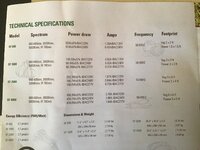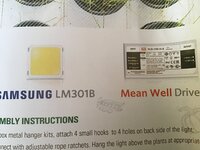Hi Boo. THC interacts with both to some degree. 2-AG, the body’s own endocannabinoid is the only (known) compound to bind fully with both. CBD also interacts with both but weakly and indirectly.
Your question inspired me to look up my lecture notes from the Green Flower Media Cannabis Fundamentals course. That led to me typing up a section on the cannabinoid receptors and THC and CBD, from the Introduction to the Endocannabinoid System (ECS) module.
Straight from my handwritten notes:
RECEPTORS - CB1 & CB2
Receptor = a protein on the surface of a cell which interacts with substances outside the cell to produce a response inside the cell. These substances are ligands.
Ligands = fatty substances in the body that can interact with cells via receptors (see above). Cannabinoids are Ligands.
Ligands can bind to recptors in different ways: as agonist, antagonist or inverse agonist.
- ligand binds to receptor and causes effect = Agonist
- THC & anandamide are both CB1 agonists.
- ligand binds to receptor and produces no direct effect = Antagonist
- useful because can block use by an agonist and thereby modulate its action. Antagonists are also called blockers (Beta blockers etc.)
- ligand binds to receptor and produces opposite effect to agonist = Inverse agonist.
Allosteric modulators
- bind to different parts of the receptors (to agonists etc.) and modulate the actions of agonists in subtle ways.
- can be positive or negative
- positive; increases biological activity of agonist (e.g., some benzodiazepines are positive allosteric modulators which increase the sedative effects of neurotransmitter GABA)
- negative; decreases biological activity of agonists (other benzos do this apparently ... remember these are from written ‘lecture notes’).
Cannabinoids interact in different ways to different degrees on the different receptors.
CB1 Receptor
Dense concentrations throughout the brain, central nervous system (CNS), Peripheral NS, pituitary, adrenal and thyroid glands, in fat, muscle, and liver cells, the digestive tract, lungs and kidneys. Is found in some immune cells (but in lower concentration than CB2 receptors, covered below).
Cannabinoids which interact with CB1 include THC, anandamide and 2AG.
- They don’t bind perfectly however.
- Only 2-AG (an endo-cannabinoid produced in our bodies) and some synthetic cannabinoids are full agonists at CB1.
- THC and anandamide = partial agonists at CB1 (anandamide - Sanskrit for bliss - is another endo-cannabinoid produced by the body that is very close to THC is molecular structure)
- CBD interacts weakly with CB1 as a negative allosteric modulator.
CB1 is a crucial means of regulating “homeostasis”: healthy equilibrium - regulation of body temp, fluid balance & sweating, appetite and food intake, blood sugar levels, ion concentration, immune response - inflammation, & a range of other related functions. Homeostasis = all systems working in harmony.
*The endo-cannabinoid system constantly receives messages about the state of these processes through various combinations of ligands and responds specifically to “fix” imbalance. CB1 is the most particular receptor in regards to this function.
CB2 Receptor
Mainly in the peripheral nervous system, spleen, thymus, tonsils, gastro-intestinal and certain immune cells. Also in the brain but at much lower density than CB1. Primary roles of CB2 is regulation of immune responses like inflammation, cell migration and programmed cell death (autophagy). Also crucial in regulation of bone mass, density and health. Involved in both destruction and removal of old tissue and the production of new tissue.
CB2 also interacts with ligands but in different ways with different effects:
- anandamide e.g., interacts with both CB1 and CB2 , more strongly at CB1
- 2-AG is the only full agonist at both receptors
- THC is a partial agonist at CB2
PHYTOCANNABINOIDS and the ECS
- Cannabinoids from plants interact with the ECS in various ways, either alone or in combination with other cannabinoids and terpenes/oils.
- using in combination offers greater medicinal potential
- Infinite possibilities of combination
- will suit different people for different conditions in different ways depending on genetic makeup, state of healt etc.
This concept of cannabinoids and terpenes working together is know as ‘The Entourage Effect’ (see pioneering work by Dr. Ethan Russo). The research is still in its infancy, but so far...
THC
- route of administration determines effect.
- Topically may not enter the blood as it binds to receptors in the skin and subdermal tissue
- Eaten: binds to some receptors on the way down but is mostly metabolised by the liver before entering the blood (so takes time)
- This liver process changes the THC molecule from Delta-9-THC to 11-hydroxy-Delta(9)-tetrahydrocannbinol (11-Hydroxy-THC or 11-OH-THC)
- 11-OH-THC is more psychoactive and breaks the blood-brain barrier more easily than Delta 9 THC so may be more effective (although we lose a lot to ‘waste’).
- Sublingual/vaping: rapidly to the bloodstream (as Delta-9-THC) and gets quickly around the body to teh major organs and CNS , interacting with blood cells and immune cells along the way
*
THC binds imperfectly with CB1 and CB2 so is a partial agonist. But it binds strongly and produces very significant effects.
CBD
Used in similar ways but its activity in the body is very different.
- is a negative allosteric modulator at CB1
- Is a partial agonist at CB2
Its action is
weak at both receptors and it achieves effects more indirectly;
- may increase expression of of CB1 receptors in the brain thereby potentially increasing the action of THC
- Inhibits the breakdown of anandamide by binding to fatty-acid-binding proteins (FABPs), thereby increasing levels of anandamide in the body (this would be a big part of its anti-depressant effects I’m guessing).
- Also thought to effect secondary receptors (including GPR55 & GPR18) and also receptors in entirely different systems like dopamine, vanilloid, A2A and 5HT serotonin receptor).
- serotonin. CBD is also a negative allosteric modulator at GABA-A receptor.
Still, little is known about the mechanisms via which CBD achieves some of its main effects.
ECS is a very complex system. There are many unexplored cannabinoids and very likely other as-yet undiscovered receptors in the body.
———
There wasn’t any content relating to other cannabinoids in this section of the course when I did it. We covered them a little bit elsewhere, I’d guess there is more in there now.
Incidentally, Green Flower Media have wound back their paywall again and you can now join up as a member and access most the basic stuff without cost. That doesn’t include the actual courses they run, but there’s lots of really good free content there again




 Thanks thirteen!
Thanks thirteen!













 that I barely have the energy to post properly about, let me try tho’.
that I barely have the energy to post properly about, let me try tho’. It looks like the first set of leaves dug in there while they were all still squished together.
It looks like the first set of leaves dug in there while they were all still squished together.



 I’m off to make coffee
I’m off to make coffee 